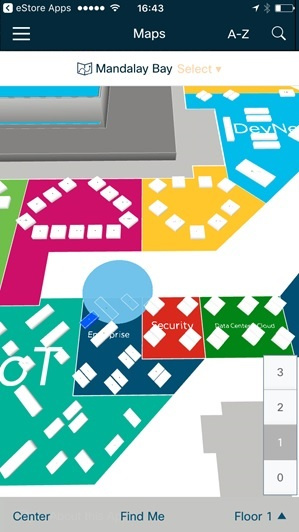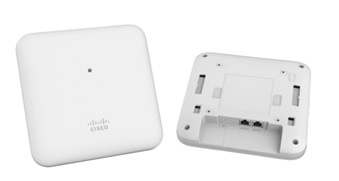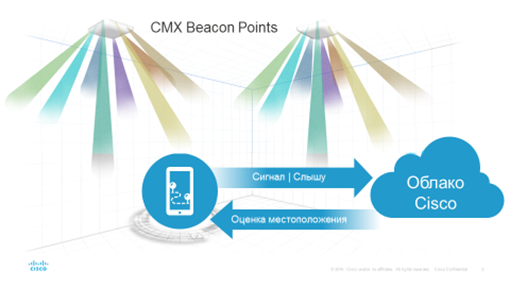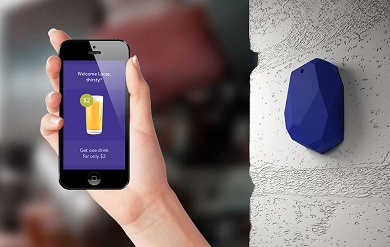Wi-Fi or iBeacon? Or it’s good when technology capabilities coincide with the desired result.
Today, many owners of shopping venues, exhibition centers and other establishments that host customers, think about how to make the site visit experience innovative, convenient and increase customer loyalty, for example, by offering navigation around the room? How to interact with visitors through their mobile devices? How to collect analytics in order to better understand your audience, its interests and needs?
 For these purposes, solutions based on Wi-Fi technology and radio beacons (iBeacon) are proposed. Together with or without a mobile application, such solutions should provide three main services - indoor navigation, proximity messaging, and analytics on the devices present. Fantasy will allow us to expand the number of services for different industries - an audio guide for museums, a search for a passenger who is late for departure for airports, etc.
For these purposes, solutions based on Wi-Fi technology and radio beacons (iBeacon) are proposed. Together with or without a mobile application, such solutions should provide three main services - indoor navigation, proximity messaging, and analytics on the devices present. Fantasy will allow us to expand the number of services for different industries - an audio guide for museums, a search for a passenger who is late for departure for airports, etc.
I propose to understand the features of both technologies, their advantages and limitations, and draw conclusions about what results are possible and what are not.
The first cluster of solutions uses a Wi-Fi network.
')
The ability to "hear" on the Wi-Fi access point frames Probe request, periodically sent by the smartphone. Probe request contains a unique device identifier, so the Wi-Fi network can accumulate MAC addresses heard on an external server, which will allow analytics on the presence of visitors (or, more precisely, their mobile devices). You can learn quite a lot from such analytics: estimate the number of visitors, their distribution over time and average stay, identify a loyal audience and new visitors, estimate the share of devices connected to the guest Wi-Fi network, compare these parameters between several sites and track changes in the behavior of visitors .
Application: tracking by the marketing service of the reaction to the events held, identification of the most efficient sites, as well as assessment of the utilization of the premises (optimization of the occupied areas) and energy savings due to adaptation of the power of air conditioning and ventilation in accordance with the number of visitors present.

If we add geo-positioning to Wi-Fi networks to this solution — calculating the coordinates of the device’s location — then we can additionally receive tracking of the movement of visitors and highlight the most popular routes and zones. In addition, the fact that a device appears in a certain zone (or the fact that it exits from there) can be used as a trigger to send a message to the device. If there is a downloaded application for this site, communication can go through push messages, and if it is not available, it can be done via sms if the visitor has previously connected to the Wi-Fi guest network and has given permission for this.
I reviewed these solutions in more detail here .
We will understand the nuances.
Wi-Fi technology uses Probe requests frames sent by devices in search of available Wi-Fi networks. They are sent when the Wi-Fi on the device is turned on. An important nuance is that different devices send these frames in different ways, depending on the algorithm defined by the manufacturer of the smartphone for this software version.
Now in practice, we see Probe request on average 1-2 times per minute. However, taking care of user anonymity, smartphone manufacturers often send fake device identifiers in a non-connected mode, which does not allow collecting analytics about these devices. All that can be done with fakes is to ignore them. Prior to iOS 9, the iPhone among the fake addresses periodically sent the real one; after version 9, the real MAC is no longer sent. Android implements the same strategy. So if the visitor has not connected to Wi-Fi, in most cases it will not be possible to collect statistics about him.
Receiving a sample 1 time per minute, you have the granularity of updating the coordinates 1 time per minute. For navigation in large premises - such as large shopping halls, airports, museums, hospitals - this can be enough if navigation means the display of the current position of the client and the drawing of the route to the target. In order to “lead” the client along the path laid, reflecting his advancement in real time, the granularity must be higher. Mobile application manufacturers use additional context to determine where the client is moving - accelerometer and compass readings.
The situation improves if the client device is connected to Wi-Fi - it becomes possible to collect data not only on samples, but also on data traffic (if you use a Cisco solution). The delay in obtaining data on the presence / location of the smartphone in this embodiment is present, but is reduced in practice to 15-20 seconds.
The second solution cluster uses beacons or iBeacon
 iBeacon uses Bluetooth technology, or rather Bluetooth Low Energy (BLE) is a common standard found on almost every mobile device. iBeacon broadcasts the following information: UUID — identifier of beacon groups; Major and Minor — parameters for grouping beacons with the same UUID.
iBeacon uses Bluetooth technology, or rather Bluetooth Low Energy (BLE) is a common standard found on almost every mobile device. iBeacon broadcasts the following information: UUID — identifier of beacon groups; Major and Minor — parameters for grouping beacons with the same UUID.
The beacons have a low cost and are installed in places where the application on the visitor’s smartphone should “wake up” and, for example, send a message linked to the location of the beacon or display where the device is located on the map navigation scripts. Typical scenario - the buyer enters the store and receives a greeting in the application with information about special offers.
Unlike the intelligent Wi-Fi network, the beacon is a fairly primitive device. The intelligence is transferred to the client device - the visitor must download the platform application in advance, turn on Bluetooth and have a connection to the data network via Wi-Fi or 3G / 4G. The application, scanning the air, detects a beacon and sends data about this event to the server of mobile applications, the server initiates the action.
In the photo, a navigation system built on radio beacons detects me in a large Cisco exhibition center. The accuracy of positioning allowed my colleagues to find me.


Radio beacons are inexpensive but time consuming to operate: replacing batteries about once every 2 years or replacing the beacon itself, configuration, tracking unauthorized movements - inexpensive beacons often have poor quality glue and eventually fall off the wall, they can also be stolen - all these are the nuances of daily operation of such solutions. If fingerprinting is used to determine the location or location based on how the device “hears” the beacons, then it is important to remember that setting up such a network is very laborious and any change in the radio environment or over-weight of the beacons will have to repeat the calibration.
In theory, the use of beacons promises a very insignificant delay in determining the location, about 2 seconds, but in practice the result is much worse. There were projects in which the surprised client observed a delay of about a minute.
Such a large delay is the result of the sum of the factors and this amount will always be present. The mobile application will scan not permanently, but at a certain frequency, and in sleep mode with the display off, it may do it less often. The beacon sends signals at intervals, often manufacturers provide for reducing the frequency of sending signals or its power while reducing the battery level. The radio environment can be loaded, and therefore the beacon signals will be lost. When using radio beacons to calculate the device coordinates, the inaccuracy is inherent in the very nature of the radio signal. The radio signal fades nonlinearly, so we get good accuracy only when approaching the object. The further we are from it, the harder it is to determine how far, because The delta signal strength change (RSSI) becomes comparable to the error in measuring the power of the sinal.

The cheapness of beacons and the desire to communicate offline with customers led to a wave of interest in this technology. Last fall, Cisco announced a new product in the area of radio beacons - Beacon Point. He first appeared on the North American market, but now has become available in Europe and will soon appear in Russia.
Beacon Point is a unique, innovative development that combines the advantages of low latency inherent to radio beacons, low operating costs for such a network, and ease of use of cloud management.
Instead of a scattering of beacons, Cisco offers a device for indoor installation that can emulate virtual beacons. Beacon point has a 16-element antenna array and can emulate up to 8 BLE beacons. Beacon Point has approximately the same coverage area as a regular Wi-Fi access point, is installed on the ceiling, powered by standard PoE, connected via the Internet to the Beacon Center, which provides management, calculation of coordinates and communication with a mobile application.
 Beacon Point sends up to 8 beams to those points where the physical beacons should stand. Information about how the device “hears” a formed beam or virtual beacon is sent by the mobile application server to the cloud, in which the coordinates are calculated using artificial self-taught intelligence.
Beacon Point sends up to 8 beams to those points where the physical beacons should stand. Information about how the device “hears” a formed beam or virtual beacon is sent by the mobile application server to the cloud, in which the coordinates are calculated using artificial self-taught intelligence.
This is an excellent approach from the traditional one, where the coordinate is calculated by the application on the device. When the cloud receives information that the client “hears” the beacon, it sends information to the SDK about how the device “hears” the beacon. The SDK for iOS and Android devices has been implemented for today.
The virtual beacon is configured in the same way as the physical one; for it, the UUID, Major and Minor are defined. However, the beacon itself is not needed. Beacon Center allows you to create virtual beacons, turn them on or off in selected locations with one mouse click. In fact, by installing the Beacon point on the ceiling, the client receives an unlimited number of installation options and beacon configurations with minimal network change costs.
Such a virtual approach has a number of important advantages:
• Significant reduction in the complexity of deploying and operating a network of radio beacons: the absence of batteries in devices and the need to replace them, the absence of unauthorized movement of beacons, their fall and theft, the absence of variations in the power of the beacon signal as the battery discharges.
• Easy configuration changes; all configurations are made online at the Beacon Center with mouse clicks.
• A good calculation of the coordinates through the use of artificial intelligence, which is self-learning for different devices and operating systems.
With such a system, you can implement not only the navigation from the client’s current location, but also ensure that the client is constantly “guided” by the route, since Updates to the coordinates occur at a level no worse than 2 times per second, which is considered sufficient for such a service.
Conclusion
Wi-Fi
The Wi-Fi network is most often already on the site for visitors and for internal use. Using existing infrastructure instead of overlaid is obviously more economical.
Among the shortcomings, it is worth noting a noticeable delay in triggering, as well as the need to connect guests to Wi-Fi to interact with them.
A Wi-Fi network is a good means of gathering information about those present, since can correlate the events of the presence of devices on a large site and produce high-quality analytics, provided that the majority of visitors connect to Wi-Fi. Mobile application is not required (smart network - "stupid" device).
When using the analytics geolocation capabilities, it is enriched with thermal presence maps with its playing in dynamics, the most popular routes and zones are determined, the residence / wait time is calculated.
iBeacon
 The speed of operation of BLE allows you to make effective navigation in the room with the full client guidance around the site. The second optimal scenario for this technology is sending messages when approaching certain areas of the premises - goods in the store, check-in counter at the airport, etc.
The speed of operation of BLE allows you to make effective navigation in the room with the full client guidance around the site. The second optimal scenario for this technology is sending messages when approaching certain areas of the premises - goods in the store, check-in counter at the airport, etc.
The first drawback is that, in order to save battery power, most people turn off Bluetooth and communication does not occur (“stupid” beacon is a smart device). You can bypass this restriction using the Wi-Fi network, which, having heard the familiar MAC address of the smartphone, notifies the mobile application server of a new guest or sends, for example, an sms message to the guest’s phone with a suggestion to turn on Bluetooth. Of course, if the person on such communication gave permission.
The second drawback is the network maintenance nightmare of hundreds of physical beacons. Of course, if you do not use Cisco Beacon Point.
And one more important element
In the story with navigation in the room, the most important element is the mobile application, the algorithm of which balances between the possibilities and disadvantages of the technology, using any context to clarify the coordinates. Often a combination of technologies (Wi-Fi and beacons) makes sense, and where one technology gives an inaccuracy, the second can correct it.
Already, applications are fighting for a place in the memory of the smartphone. The memory is regularly filled and unused applications are deleted. Here, an interesting development seems to be the use of aggregator applications — those using which one can visit various sites and receive a similar level of services — navigation and messages, such as loyalty card wallets, etc.
Below are some materials that interested me in preparing this article:
- Cisco Beacon Point web page
- Cisco Beacon Point White Paper
- On the hook: how to attract a customer at the right time and in the right place
- iBeacon. Myths and Reality
 For these purposes, solutions based on Wi-Fi technology and radio beacons (iBeacon) are proposed. Together with or without a mobile application, such solutions should provide three main services - indoor navigation, proximity messaging, and analytics on the devices present. Fantasy will allow us to expand the number of services for different industries - an audio guide for museums, a search for a passenger who is late for departure for airports, etc.
For these purposes, solutions based on Wi-Fi technology and radio beacons (iBeacon) are proposed. Together with or without a mobile application, such solutions should provide three main services - indoor navigation, proximity messaging, and analytics on the devices present. Fantasy will allow us to expand the number of services for different industries - an audio guide for museums, a search for a passenger who is late for departure for airports, etc.I propose to understand the features of both technologies, their advantages and limitations, and draw conclusions about what results are possible and what are not.
The first cluster of solutions uses a Wi-Fi network.
')
The ability to "hear" on the Wi-Fi access point frames Probe request, periodically sent by the smartphone. Probe request contains a unique device identifier, so the Wi-Fi network can accumulate MAC addresses heard on an external server, which will allow analytics on the presence of visitors (or, more precisely, their mobile devices). You can learn quite a lot from such analytics: estimate the number of visitors, their distribution over time and average stay, identify a loyal audience and new visitors, estimate the share of devices connected to the guest Wi-Fi network, compare these parameters between several sites and track changes in the behavior of visitors .
Application: tracking by the marketing service of the reaction to the events held, identification of the most efficient sites, as well as assessment of the utilization of the premises (optimization of the occupied areas) and energy savings due to adaptation of the power of air conditioning and ventilation in accordance with the number of visitors present.
If we add geo-positioning to Wi-Fi networks to this solution — calculating the coordinates of the device’s location — then we can additionally receive tracking of the movement of visitors and highlight the most popular routes and zones. In addition, the fact that a device appears in a certain zone (or the fact that it exits from there) can be used as a trigger to send a message to the device. If there is a downloaded application for this site, communication can go through push messages, and if it is not available, it can be done via sms if the visitor has previously connected to the Wi-Fi guest network and has given permission for this.
I reviewed these solutions in more detail here .
We will understand the nuances.
Wi-Fi technology uses Probe requests frames sent by devices in search of available Wi-Fi networks. They are sent when the Wi-Fi on the device is turned on. An important nuance is that different devices send these frames in different ways, depending on the algorithm defined by the manufacturer of the smartphone for this software version.
Now in practice, we see Probe request on average 1-2 times per minute. However, taking care of user anonymity, smartphone manufacturers often send fake device identifiers in a non-connected mode, which does not allow collecting analytics about these devices. All that can be done with fakes is to ignore them. Prior to iOS 9, the iPhone among the fake addresses periodically sent the real one; after version 9, the real MAC is no longer sent. Android implements the same strategy. So if the visitor has not connected to Wi-Fi, in most cases it will not be possible to collect statistics about him.
Receiving a sample 1 time per minute, you have the granularity of updating the coordinates 1 time per minute. For navigation in large premises - such as large shopping halls, airports, museums, hospitals - this can be enough if navigation means the display of the current position of the client and the drawing of the route to the target. In order to “lead” the client along the path laid, reflecting his advancement in real time, the granularity must be higher. Mobile application manufacturers use additional context to determine where the client is moving - accelerometer and compass readings.
The situation improves if the client device is connected to Wi-Fi - it becomes possible to collect data not only on samples, but also on data traffic (if you use a Cisco solution). The delay in obtaining data on the presence / location of the smartphone in this embodiment is present, but is reduced in practice to 15-20 seconds.
The second solution cluster uses beacons or iBeacon
 iBeacon uses Bluetooth technology, or rather Bluetooth Low Energy (BLE) is a common standard found on almost every mobile device. iBeacon broadcasts the following information: UUID — identifier of beacon groups; Major and Minor — parameters for grouping beacons with the same UUID.
iBeacon uses Bluetooth technology, or rather Bluetooth Low Energy (BLE) is a common standard found on almost every mobile device. iBeacon broadcasts the following information: UUID — identifier of beacon groups; Major and Minor — parameters for grouping beacons with the same UUID.The beacons have a low cost and are installed in places where the application on the visitor’s smartphone should “wake up” and, for example, send a message linked to the location of the beacon or display where the device is located on the map navigation scripts. Typical scenario - the buyer enters the store and receives a greeting in the application with information about special offers.
Unlike the intelligent Wi-Fi network, the beacon is a fairly primitive device. The intelligence is transferred to the client device - the visitor must download the platform application in advance, turn on Bluetooth and have a connection to the data network via Wi-Fi or 3G / 4G. The application, scanning the air, detects a beacon and sends data about this event to the server of mobile applications, the server initiates the action.
In the photo, a navigation system built on radio beacons detects me in a large Cisco exhibition center. The accuracy of positioning allowed my colleagues to find me.


Radio beacons are inexpensive but time consuming to operate: replacing batteries about once every 2 years or replacing the beacon itself, configuration, tracking unauthorized movements - inexpensive beacons often have poor quality glue and eventually fall off the wall, they can also be stolen - all these are the nuances of daily operation of such solutions. If fingerprinting is used to determine the location or location based on how the device “hears” the beacons, then it is important to remember that setting up such a network is very laborious and any change in the radio environment or over-weight of the beacons will have to repeat the calibration.
In theory, the use of beacons promises a very insignificant delay in determining the location, about 2 seconds, but in practice the result is much worse. There were projects in which the surprised client observed a delay of about a minute.
Such a large delay is the result of the sum of the factors and this amount will always be present. The mobile application will scan not permanently, but at a certain frequency, and in sleep mode with the display off, it may do it less often. The beacon sends signals at intervals, often manufacturers provide for reducing the frequency of sending signals or its power while reducing the battery level. The radio environment can be loaded, and therefore the beacon signals will be lost. When using radio beacons to calculate the device coordinates, the inaccuracy is inherent in the very nature of the radio signal. The radio signal fades nonlinearly, so we get good accuracy only when approaching the object. The further we are from it, the harder it is to determine how far, because The delta signal strength change (RSSI) becomes comparable to the error in measuring the power of the sinal.

The cheapness of beacons and the desire to communicate offline with customers led to a wave of interest in this technology. Last fall, Cisco announced a new product in the area of radio beacons - Beacon Point. He first appeared on the North American market, but now has become available in Europe and will soon appear in Russia.
Beacon Point is a unique, innovative development that combines the advantages of low latency inherent to radio beacons, low operating costs for such a network, and ease of use of cloud management.
Instead of a scattering of beacons, Cisco offers a device for indoor installation that can emulate virtual beacons. Beacon point has a 16-element antenna array and can emulate up to 8 BLE beacons. Beacon Point has approximately the same coverage area as a regular Wi-Fi access point, is installed on the ceiling, powered by standard PoE, connected via the Internet to the Beacon Center, which provides management, calculation of coordinates and communication with a mobile application.
 Beacon Point sends up to 8 beams to those points where the physical beacons should stand. Information about how the device “hears” a formed beam or virtual beacon is sent by the mobile application server to the cloud, in which the coordinates are calculated using artificial self-taught intelligence.
Beacon Point sends up to 8 beams to those points where the physical beacons should stand. Information about how the device “hears” a formed beam or virtual beacon is sent by the mobile application server to the cloud, in which the coordinates are calculated using artificial self-taught intelligence.This is an excellent approach from the traditional one, where the coordinate is calculated by the application on the device. When the cloud receives information that the client “hears” the beacon, it sends information to the SDK about how the device “hears” the beacon. The SDK for iOS and Android devices has been implemented for today.
The virtual beacon is configured in the same way as the physical one; for it, the UUID, Major and Minor are defined. However, the beacon itself is not needed. Beacon Center allows you to create virtual beacons, turn them on or off in selected locations with one mouse click. In fact, by installing the Beacon point on the ceiling, the client receives an unlimited number of installation options and beacon configurations with minimal network change costs.
Such a virtual approach has a number of important advantages:
• Significant reduction in the complexity of deploying and operating a network of radio beacons: the absence of batteries in devices and the need to replace them, the absence of unauthorized movement of beacons, their fall and theft, the absence of variations in the power of the beacon signal as the battery discharges.
• Easy configuration changes; all configurations are made online at the Beacon Center with mouse clicks.
• A good calculation of the coordinates through the use of artificial intelligence, which is self-learning for different devices and operating systems.
With such a system, you can implement not only the navigation from the client’s current location, but also ensure that the client is constantly “guided” by the route, since Updates to the coordinates occur at a level no worse than 2 times per second, which is considered sufficient for such a service.
Conclusion
Wi-Fi
The Wi-Fi network is most often already on the site for visitors and for internal use. Using existing infrastructure instead of overlaid is obviously more economical.
Among the shortcomings, it is worth noting a noticeable delay in triggering, as well as the need to connect guests to Wi-Fi to interact with them.
A Wi-Fi network is a good means of gathering information about those present, since can correlate the events of the presence of devices on a large site and produce high-quality analytics, provided that the majority of visitors connect to Wi-Fi. Mobile application is not required (smart network - "stupid" device).
When using the analytics geolocation capabilities, it is enriched with thermal presence maps with its playing in dynamics, the most popular routes and zones are determined, the residence / wait time is calculated.
iBeacon
 The speed of operation of BLE allows you to make effective navigation in the room with the full client guidance around the site. The second optimal scenario for this technology is sending messages when approaching certain areas of the premises - goods in the store, check-in counter at the airport, etc.
The speed of operation of BLE allows you to make effective navigation in the room with the full client guidance around the site. The second optimal scenario for this technology is sending messages when approaching certain areas of the premises - goods in the store, check-in counter at the airport, etc.The first drawback is that, in order to save battery power, most people turn off Bluetooth and communication does not occur (“stupid” beacon is a smart device). You can bypass this restriction using the Wi-Fi network, which, having heard the familiar MAC address of the smartphone, notifies the mobile application server of a new guest or sends, for example, an sms message to the guest’s phone with a suggestion to turn on Bluetooth. Of course, if the person on such communication gave permission.
The second drawback is the network maintenance nightmare of hundreds of physical beacons. Of course, if you do not use Cisco Beacon Point.
And one more important element
In the story with navigation in the room, the most important element is the mobile application, the algorithm of which balances between the possibilities and disadvantages of the technology, using any context to clarify the coordinates. Often a combination of technologies (Wi-Fi and beacons) makes sense, and where one technology gives an inaccuracy, the second can correct it.
Already, applications are fighting for a place in the memory of the smartphone. The memory is regularly filled and unused applications are deleted. Here, an interesting development seems to be the use of aggregator applications — those using which one can visit various sites and receive a similar level of services — navigation and messages, such as loyalty card wallets, etc.
Below are some materials that interested me in preparing this article:
- Cisco Beacon Point web page
- Cisco Beacon Point White Paper
- On the hook: how to attract a customer at the right time and in the right place
- iBeacon. Myths and Reality
Source: https://habr.com/ru/post/337130/
All Articles